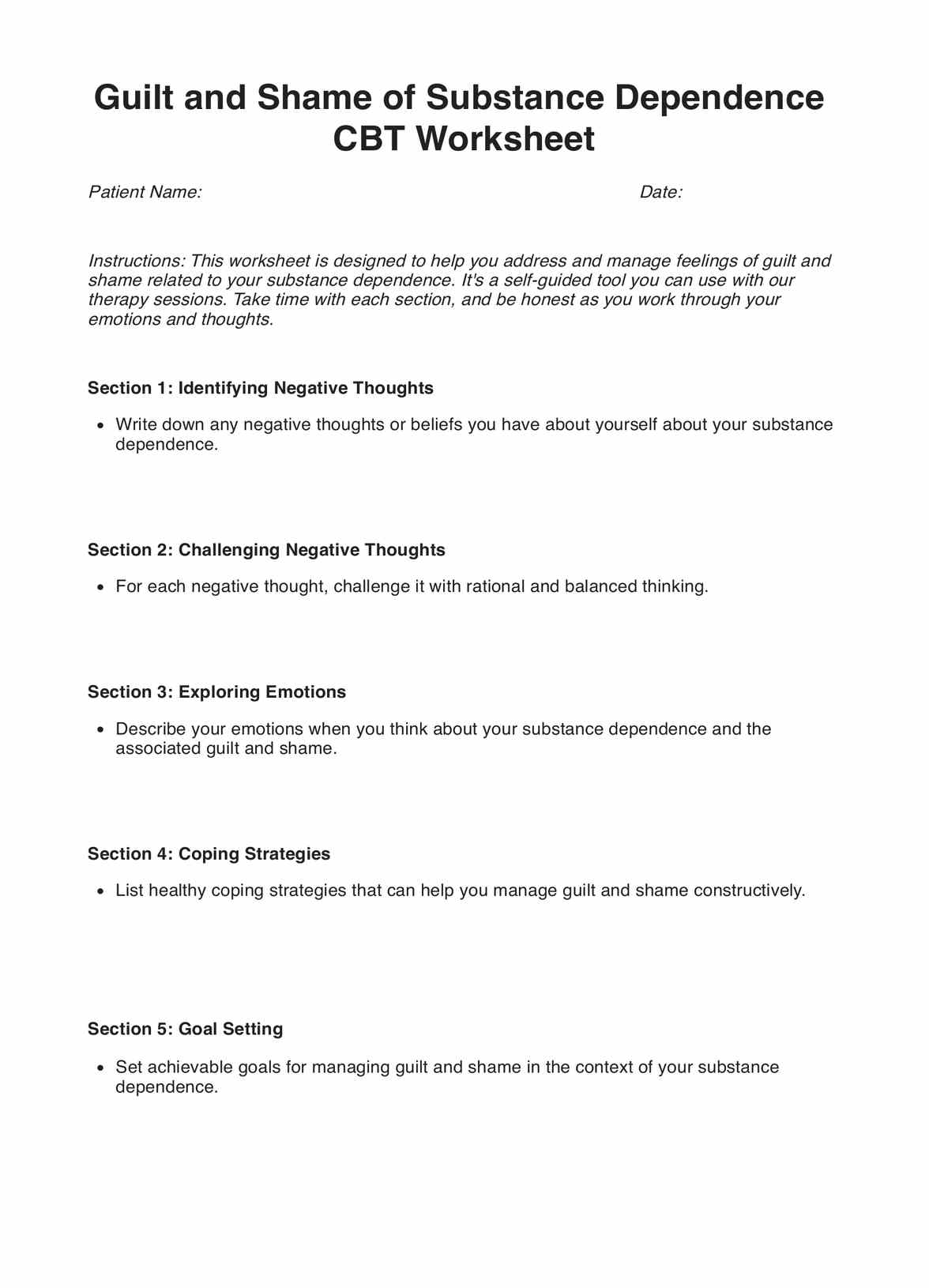The time to complete the worksheet varies from person to person. It depends on the complexity of emotions and thought patterns. Some may finish it in one session, while others may take several sessions to address their guilt and shamefully.

Guilt and Shame of Substance Dependence CBT Worksheet
Manage guilt and shame effectively with the Guilt and Shame of Substance Dependence CBT Worksheet—a powerful tool for addiction recovery.
Use Template
Guilt and Shame of Substance Dependence CBT Worksheet Template
Commonly asked questions
The Guilt and Shame of Substance Dependence CBT Worksheet can often be found online on therapy websites or resources related to addiction recovery. It may also be provided by therapists or support groups.
It is best used when individuals struggle with overwhelming guilt and shame related to substance dependence. It can be employed during early recovery, after a relapse, or as part of ongoing therapy to manage these challenging emotions.
EHR and practice management software
Get started for free
*No credit card required
Free
$0/usd
Unlimited clients
Telehealth
1GB of storage
Client portal text
Automated billing and online payments











